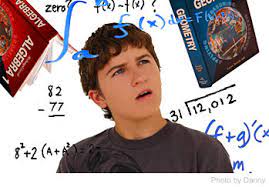What Is the Difference Between Electric Field and Potential?

Electric Field
When charge is present in any form, an electric field is linked with each point in space. The value of E, also known as electric field intensity or simply the electric field, electric field strength where it expresses the size and direction of the electric field. To calculate what will happen to electric charges close to a point, all that is required is knowledge of the value of the electric field at that point, without any precise information of what caused the field. Rather than thinking of the electric force to be a direct interaction between two electric charges at a distance, one charge is thought of as the source of an electric field that proves to extend outward into the surrounding space, and the force exerted on a second charge in this space is thought of as a direct interaction between the electric field and the second charge. Here, the electric, or Coulomb, force F exerted per unit positive electric charge q at each place, or simply E = F/q, may be used to calculate the strength of an electric field E at any position. The resultant force happens to be doubled if the second, or test, charge is twice as large. However, their quotient, which is the measure of the electric field E, remains constant at all times. The source charge, not the test charge, determines the intensity of the electric field. In a strict sense, the addition of a small test charge, which has its own electric field, alters the existing field somewhat. The electric field may be conceived of as the force every unit positive ions which would be produced before the presence of the test charge disturbs the field.
The force exerted on a negative charge is in the opposite direction as the force exerted on a positive charge. The direction of the force on a positive charge is selected randomly as the direction of the electric field since an electric field has both magnitude and direction. The electric field surrounding an isolated positive charge is directed radially outward because positive charges repel each other. Electric fields are illustrated as the starting on positive charges as well as ending on negative charges when represented by lines of force or field lines. The direction of the electric field at a place is shown by a line tangent to a field line. The electric field is stronger where the field lines are near together than when they are farther apart. The size of the electric field around an electric charge, which is regarded the source of the electric field, is determined by the charge’s spatial distribution. The electric field proves to be directly proportional to the quantity of charge for a charge concentrated virtually at a point; it is inversely proportional to the square of the distance radially out from the source charge’s centre and relies on the nature of the medium. The electric field is always reduced below its value in a vacuum when a material medium is present.
Electric potential
The amount of work energy required to convey a unit of electric charge from a reference point to a given place in an electric field is described as the electric potential (also known as the electric field potential, potential drop, or electrostatic potential). More precisely, it is the energy per unit charge for a test charge that is so tiny that the field disturbance is insignificant. Furthermore, the test charge is expected to move through the field with little acceleration to prevent it from gaining kinetic energy or emitting radiation. The electric potential at the reference location is zero units by definition. The electrostatic field is a vector quantity in classical electrostatics, equal to the electric potential energy of each charged particle at any place (measured in joules) divided by the charge of that particle, which is a scalar number indicated by V or rarely (measured in coulombs). A quotient is derived by dividing the charge on the particle, which is a feature of the electric field itself. In a nutshell, electric potential is the amount of energy stored in a unit of charge.
This number can be estimated in joules per coulomb (JC-1) or volts in a static (time-invariant) or dynamic (time-varying) electric field at a certain moment (V). At infinity, the electric potential is supposed to be zero. When time-varying fields are included in electrodynamics, the electric field cannot be represented only in terms of a scalar potential. Instead, both the scalar electric potential and the magnetic vector potential may be used to represent the electric field. Because the electric potential and the magnetic vector potential combine to generate a four-vector, Lorentz transformations mix the two types of potential. Electric potential is always a continuous function in space in practise; otherwise, the spatial derivative would result in a field of infinite size, which is practically impossible. Even an idealised point charge has a r potential that is constant everywhere except at the origin. The electric field is not infinite at any point, but it is not continuous over an assumed surface charge. As a result, an idealised surface charge has a constant electric potential. The ln(r) potential of an idealised linear charge is continuous everywhere except on the linear charge.
Check this question and solve: An electric dipole is placed in an electric field generated by a point charge..




